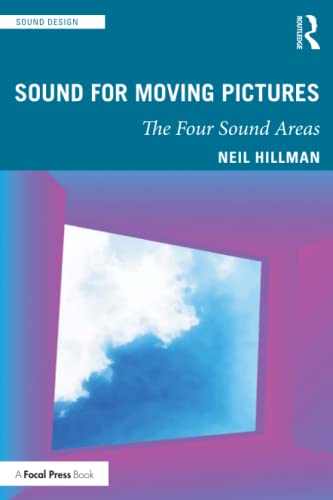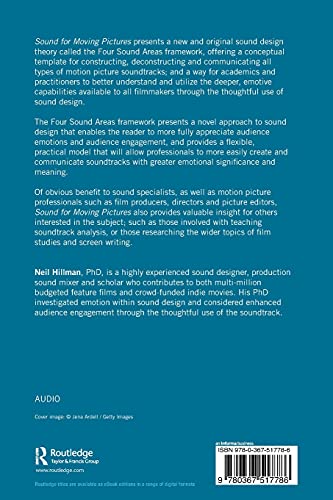


Sound for Moving Pictures (Sound Design)
C**N
Art and Craft
Some directors say that sound is as important as sight in video and films. Yet there seems to be much more emphases upon cinematography then sound recording and mixing. This book is an attempt to suggest a way to redress the balance.To accomplish this, Hillman suggests a new taxonomy for sound: Narrative, Abstract, Temporal and Spatial. Narrative communicates meaning; Abstract are chosen for emotional effect; Temporal affects pace; and Spatial reveals position. (I would have preferred that he used Tempo instead of Temporal, but you get the point.) He doesn't suggest this as a replacement for the traditional taxonomy of Dialog, Sound Effects, Foley, Automated Dialog Replacement and Music, but rather a parallel approach that emphasizes the art rather than the craft, to manipulate sound to enhance the emotional impact of the story.Clips from movies and videos to illustrate the points are available to the reader on line. (Most of these clips are from non-blockbuster movies, although there is a clip from Apocalypse Now.) However, there are few actual electronic links to these clips in the on-line text. It may take a little effort to find the clips on the web site, where they are linked under the heading "book media". It would have been nice to have specific links to the clips at the point in the text where they are discussed. By keeping both the reader and the text open on my computer I found it easy to switch back and forth and it made the text highly effective.Negatively, the book is clearly derived from a work that Hillman prepared as a doctoral thesis and there is a lengthy and unnecessary discussion of the requirements and process of earning the PHD. There are also more explanations of the structure of the book than are necessary and a suggestion that application of the four sound areas can be precisely reduced to some kind of graphic notation and planning for sound design, as well as some kind of mathematical formula. This seemed like an effort to reduce art to craft. On the other hand, the graphic notation may help the sound designer and other team members, like the director and editor, to agree on a sound design.There is little mention of the fact that, while the sound designer can readily affect the production with sound effects and equalization of sounds, changes in tempo will require cooperation of the director, editor and composer.The book is primarily concerned with large crew, narrative productions, although there is reference to a cartoon public service announcement and a boxing match. The author does not explain how the small crew or serious single person moviemaker can apply this approach. For example, it may be impossible or difficult to speed up the tempo of a piece of rented music and have it make sense. How does one transition from a slow piece to a fast piece and vice versa? Still a study of the four-area approach will help in the shaping of the sound even in small productions.I consider this book an important one for serious filmmakers, even though it should have been revised from the original thesis to make it more accessible to practitioners. Many books tell you how to record sound and manipulate digital audio workstations. Fewer tell you how to enhance sound and ultimately the story, and then illustrate the points with conveniently available clips.Note: The publisher provided me with a review copy of this book at no charge.
D**H
VItal reading for anyone interested in sound for film and television.
This book is an excellent purchase and essential reading for anyone interested in Sound Design or post-production sound. Dr Hillman takes a complicated subject and explains it simply and clearly, breaking a concept down into logical sections which, once understood and applied, reframe the approach to emotion in the soundtracks for motion pictures and television.Sound for Moving Pictures: The Four Sound Areas is a future classic, which repays the reader many times over.
Trustpilot
5 days ago
1 month ago